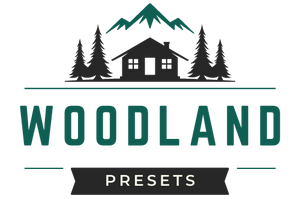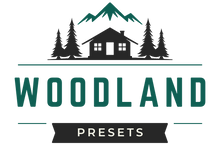Tips for Story-Rich Wildlife Photography with Juho Kuusela

If capturing peaceful, story-rich bird and wildlife photos while slowing down and enjoying the moment sounds like your kind of photography, this feature is for you.
We sat down with Helsinki-based wildlife photographer Juho Kuusela (@kuuzelaphotos_wildlife), whose quiet, minimalist bird photography stands out for its soft light, patient timing, and natural behavior. Using a simple but effective wildlife photography camera setup and a pair of go-to lenses for both reach and versatility, he shares how he captures beautiful wildlife photos, from local water birds to stunning forest animals.
In this behind-the-scenes Q&A, he walks us through his field habits, gear choices, bird photography and editing tips, how to stay patient and enjoy the wait, how to build the right mood in post, stay inspired on slow days, and more.
Whether you're just starting out or looking to improve your wildlife photography gear and technique, there's something here you can take away and apply to your own workflow!

Can you tell us a bit about yourself, how you first got into wildlife photography, and what keeps you inspired to keep going?
Since I was a child, I have been watching BBC’s and other wildlife documentaries. Wildlife has always interested me.
In 2017, I bought my first camera. Nature and wildlife photography was a great way to learn how to use your camera in different conditions.
In recent years, wildlife photography has been a small part of my photography portfolio. But now I have been fully focusing on wildlife photography for the last 6 months.
Every day in nature is different, which inspires me to go out with my camera. You never know what you catch.

Your gallery shows a strong focus on birds, especially waterbirds. What is it about those subjects that keeps you coming back?
I’m living near the Gulf and a natural conservation zone, so birds and especially waterbirds are a big part of nature here.
My wildlife photography journey is at the start, and following those birds’ daily life is inspiring. And I like how challenging it is to take different photos of birds I’ve already photographed.

There’s a peaceful, almost meditative feel to your work, soft light, gentle compositions, and quiet behavior. How would you describe your style in your own words?
Simple. I try to keep photos simple with light edits and to use surrounding objects to bring life in images, like trees, bushes, etc.

What gear do you currently use, and is there a piece of equipment you’ve found particularly helpful for your type of photography?
I’m using the Sony A6600 with the Sony 200-600mm G lens most of the time for wildlife photography.
I have also use the Sony F2.8/16-55mm lens for wider photos in my backpack.
The most helpful equipment is a thermos bottle full of coffee. There are long periods of time when nothing happens, and when having a coffee break, it usually means you need to get your camera fast and drink cold coffee later.

Could you walk us through your typical workflow, from planning a shoot, to being out in the field, to your final edit?
I don’t usually plan anything else than where I’m going to take photos. I use Tiira (Finnish bird database) to find out what kind of species are discovered in local areas.
Then I just take my gear with me and go for a walk. And at home, I choose images that speak to me and do edit for them.

You seem to have a lot of patience when working around wildlife. Do you usually wait in one spot or move with the subjects? What’s your approach?
It depends where and what I’m photographing. But normally when I’m having my walks, I choose 2-3 different spots where to sit and follow nature for a longer time.
I don’t like to rush from spot to spot. Wildlife photography is a great way to relax in busy everyday life.

When editing your images, how do you decide what kind of mood or light to emphasize without overprocessing?
Telling a story in a photo is most important. What is happening in the image determines what kind of light or mood I want to use.
A darker atmosphere for dramatic photos and lighter for happier events.

What’s one technique, habit, or mindset that’s really helped you grow your photography over time?
Learning how to make B&W photos look better. Sometimes when I’m struggling with my edit, I do a B&W version first and then convert it to color.

What’s one photo that means something personal to you, either because of the moment, the light, or what it took to get the shot?
My first closer photo of a white-tailed eagle sitting in a tree.
I had already spent a long day taking photos, and I was going home. Crows started to shout loudly, and then I saw an eagle flying in the sky. It landed on the top of the spruce near me, and I managed to have a couple of good shots.
I never forget how good that felt.

Living in Helsinki, are there any local nature areas or lesser-known spots that you find especially inspiring to photograph?
Vanhankaupunginselkä bay and its natural conservation zone are the places I visit usually.
And what is better than listening to the waves hitting on the rocks and seeing white-tailed eagles flying in the sky at the same time.

What advice would you give to someone new to wildlife photography who wants to start learning and improving their skills?
Patience. It’s a long journey with ups and downs. Enjoy when you get good photos, but don’t be discouraged if you don’t get any.
And starting with easy subjects, don’t be afraid of hard conditions, and try different settings, so you learn how to use your camera.

Where can people follow more of your beautiful work or connect with you online?
For wildlife photos in Instagram @kuuzelaphotos_wildlife and other photography is under @kuuzelaphotos.
Bonus question: Anything you’d like to share about yourself or your work that we didn’t cover?
I might look and sound like a bear, but don’t be afraid to come talk with me in social media or real life 😊

Thank you for reading! From finding the right wildlife photography gear to working with natural light and capturing patient, emotion-filled moments, his process is a great reminder that the best wildlife photos don’t come from rushing; they come from slowing down, observing, and staying present.
His work is proof that you don’t need a massive setup or perfect conditions to create beautiful results, just curiosity, a bit of patience, and a camera you enjoy using.
Big thank you to Juho for taking the time to share his storytelling approach to bird and wildlife photography. He’s been sharing his work with the Woodland Presets community since January, and it’s always a true pleasure to see his incredible work!




Leave a comment